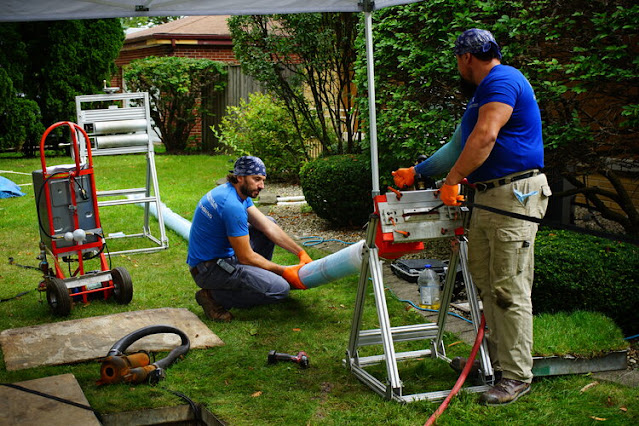Are you experiencing issues with your sewer pipes, such as slow draining or backups? Traditional sewer repair methods involve excavation, which can be costly, time-consuming, and disruptive. However, there is a newer, more efficient method called trenchless sewer pipe lining. In this article, we will discuss what trenchless sewer pipe lining is, how it works, and whether it is right for your home or business.
What is Trenchless Sewer Pipe Lining?
Trenchless sewer pipe lining is a method of repairing damaged sewer pipes without the need for excavation. This method involves inserting a flexible liner into the existing pipe and then curing it in place with a special epoxy resin. Once cured, the liner forms a new, seamless pipe within the old one, effectively repairing any damage or leaks.
How Does Trenchless Sewer Pipe Lining Work?
The first step in trenchless sewer pipe lining is to inspect the pipes with a camera to determine the extent of the damage. If the pipes are found to be suitable for lining, the next step is to clean them thoroughly with high-pressure water jets to remove any debris or buildup.
Once the pipes are clean, the liner is inserted into the pipe through a small access point, such as a cleanout or a small excavation. The liner is then inflated to conform to the shape of the existing pipe and to press the epoxy resin against the inner walls of the old pipe.
The epoxy resin then cures, either through a process of heat, air, or UV light, depending on the manufacturer's requirements. Once cured, the liner forms a new, seamless pipe within the old one, effectively repairing any damage or leaks.
Is Trenchless Sewer Pipe Lining Right for Your Home or Business?
There are several factors to consider when deciding whether trenchless sewer pipe lining is right for your home or business.
Age and Material of Pipes:
The age and material of your pipes are important factors to consider when deciding whether trenchless sewer pipe lining is right for you. Trenchless sewer pipe lining is suitable for pipes made of various materials, including PVC, cast iron, and clay. However, it is not recommended for pipes that have collapsed or have been damaged by root intrusion.
Extent of Damage:
The extent of the damage to your pipes will also play a role in determining whether trenchless sewer pipe lining is the right choice. While trenchless sewer pipe lining can repair many types of damage, it may not be suitable for pipes that have completely collapsed or have large holes or cracks.
Cost:
Trenchless sewer pipe lining can be more expensive than traditional methods in some cases. However, it may be more cost-effective in the long run, as it is less disruptive and requires less labor. Additionally, trenchless sewer pipe lining can extend the life of your pipes by up to 50 years, which can save you money on future repairs.
Environmental Impact:
Trenchless sewer pipe lining is a more environmentally friendly option than traditional excavation methods. It reduces the amount of excavation and transportation of materials needed, which can help reduce carbon emissions and minimize the impact on the environment.
Conclusion
Trenchless sewer pipe lining is a newer, more efficient method of repairing damaged sewer pipes without the need for excavation. It offers many benefits, including cost savings, reduced disruption, and a longer lifespan for your pipes. However, whether it is the right choice for your home or business depends on factors such as the age and material of your pipes, the extent of the damage, and your budget. If you're experiencing issues with your sewer pipes, contact a professional plumber to discuss whether trenchless sewer pipe lining is right for you.
